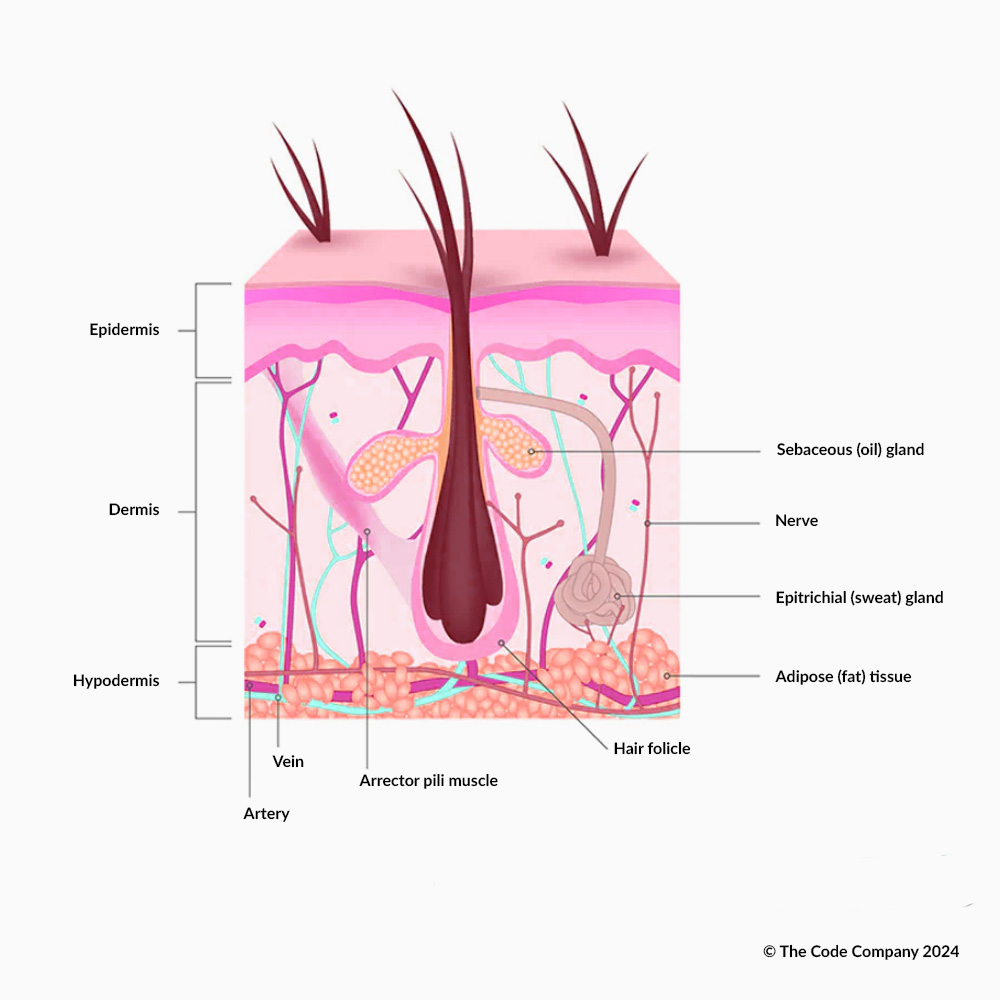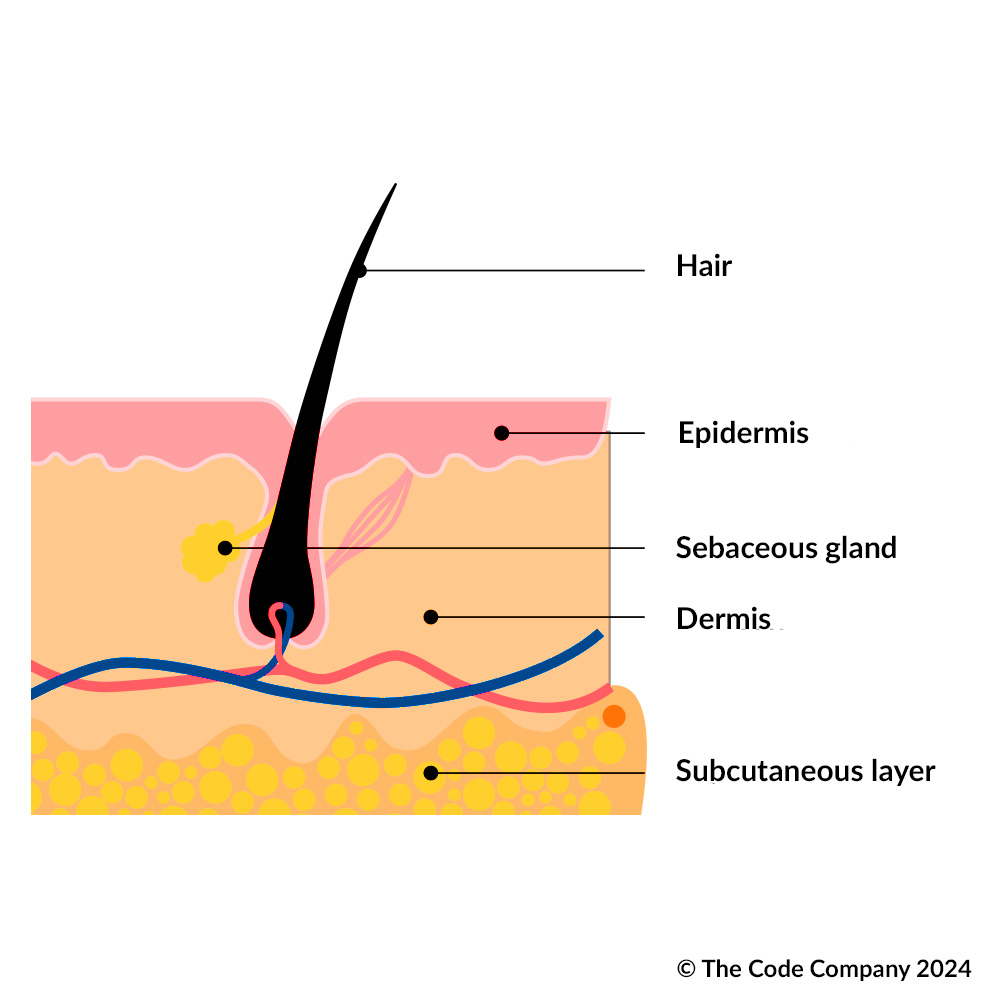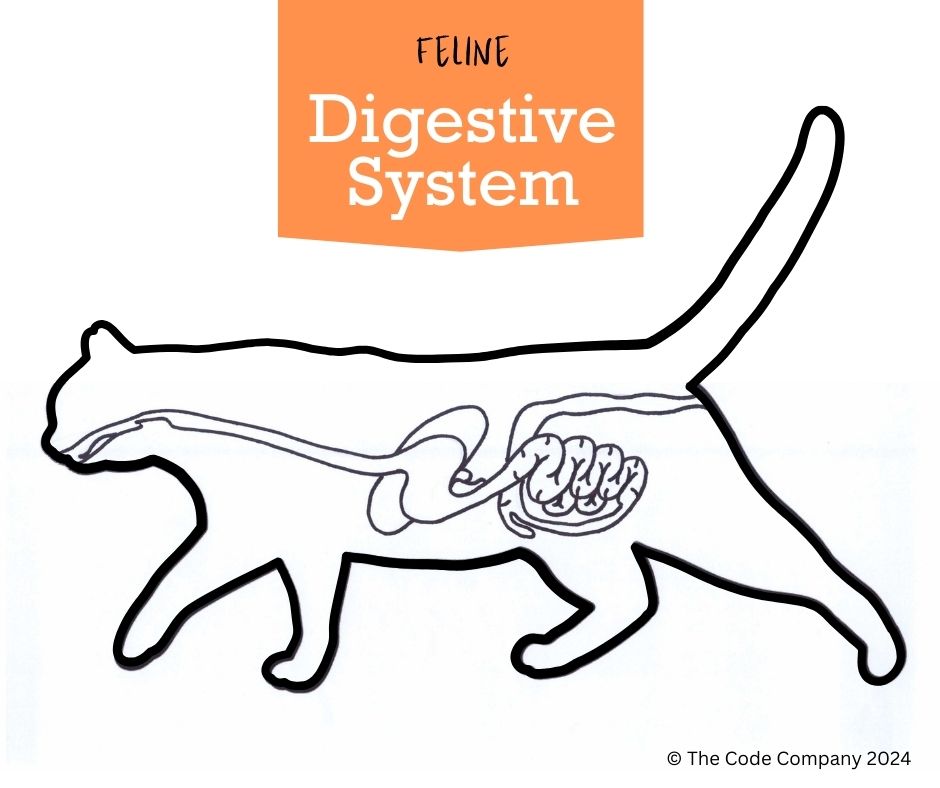Nervous system The canine and feline nervous systemAs we explore the bodily systems of our furry and purry friends, there is one system without which all the others would not be able to function: the nervous system. The nervous system consists of the brain, spinal cord and all the nerves and connective tissue that runs between them and the rest of the body’s organs. Think of the nervous system not only as the electrical wiring that powers the house, but with its own power source and smart system – the brain – that maintains equilibrium in every room. |
The canine skin and coat Your dog's skin and coatYour dog’s skin and coat make up a multi-functional super system. They are a barrier of protection, a convenient thermostat and water meter, as much as they are a barometer of your dog’s internal health. Your dog’s skin and coat also function as his largest sensory organ, as well as a very important communication tool. In this article, we’ll explore the structure and function of the canine skin and coat. We’ll suggest ways to keep your dog’s skin and coat healthy, discuss the symptoms of an unhealthy skin and coat, issues that may arise and when to see the veterinarian as a result. |
The feline skin and coat Your cat's skin and coat systemYour cat’s skin and coat make up a multi-functional super system. They are a barrier of protection, a convenient thermostat and water meter, as much as they are a barometer of your cat’s internal health. Your cat’s skin and coat also function as her largest sensory organ, as well as a very important communication tool. In this article, we’ll explore the structure and function of the feline skin and coat. We’ll suggest ways to keep your cat’s skin and coat healthy, discuss the symptoms of an unhealthy skin and coat, issues that may arise and when to see the veterinarian as a result. |
The feline digestive system Your cat's digestive systemThe feline digestive system is similar in form and function to the canine digestive system. However, there are some differences in their diet that account for variances in how they absorb and use energy, and how long their digestive process takes. Cats are obligate carnivores, which means that in order to survive, they need a diet that is primarily made up of meat. They can eat carbs and fats, but their health will deteriorate if they don’t get enough animal proteins to maintain their energy, lean muscle, tendons and ligaments, fur, skin, nails, hormonal balance and many other body organs and systems. Despite around 10,000 years of domestication, there is little that has changed in their protein-dominant diet. Therefore, their digestive system is primed to ingest, digest, absorb and eliminate based on a meat-based diet. |
The canine digestive system Your dog's digestive systemDogs require not only high-quality food, but – equally importantly – healthy digestion in order to absorb the maximum amount of goodness from their nutrition. Let’s take a closer look at your dog’s digestive system: the organs it’s made up of, how it works, how you can help your dog’s digestive system to remain healthy, the issues that could arise, and when to see the vet about your dog’s digestive system. |
Your pets and the holidays It's almost time for the holidays, which can really put a spoke in my pets' routine. What should I do?Silly season has arrived, which means the end of the year is in sight. Some of you will be going away on holiday, some will have friends and family over to visit, while others may take time off work, stay in and get some much-needed ‘me-time’. Whatever your plans are for the holidays, they spell a change for your pet/s. In this article, we offer a friendly reminder to be mindful of how the holidays may affect your pet’s emotional and physical wellbeing, and what you can do about it. |
Managing your pets' anxiety When I have lots of guests over, my cat goes into hiding and my dog becomes extra needy - getting under my feet while I'm trying to host. What can I do when my pets get so nervous?The holiday season is fast approaching and while for many people that means spending more time at home with your furry friends, it also means that your and your pets’ routine is about to change. Perhaps extended family are coming to visit (or you and your pets are going away to visit them). If so, more people (potentially strangers) will be in your pets’ space; there will be more noise and longer days of visiting. Your pets are even sensitive enough to detect any changes in family dynamics – especially around holiday time! |
Mange in cats My cat is scratching relentlessly and has begun to lose patches of fur. She looks pretty unhappy. What can I do?What is mange?Mange is a skin condition that develops when there is an infestation of parasitic mites or an overpopulation of mites on or in a cat’s skin. The presence of these mites, some of which burrow into your cat’s skin, causes itching, redness, and other uncomfortable symptoms. As with dog mange, cats can suffer from different types of mange based on the types of mites present on their skin. In this article we explore the different types of mange that cats can get, how the different types of mange are diagnosed and what can be done to treat the mange. |
Mange in dogs My young dog's fur is falling out - it started on her face and around her eyes. She's not scratching a lot, but is feeling under the weather. What could it be?What is mange?Mange is a skin condition in pets caused by an overpopulation or infestation of parasitic mites. The mites burrow into an animal’s skin (sarcoptic) or over-populate the hair follicles (demodex), causing either itchiness and thickened skin, or skin changes and hair fall. There are different types of mange caused by different species of microscopic mites – the most common being demodectic mange and sarcoptic mange. In this article, we’ll explore the symptoms of mange, how the different types of mange are diagnosed and treated, and whether mange is contagious to humans. |
Uveitis My dog's eye looks a bit cloudy and appears to be shrunken. Sometimes he behaves like he can't see properly.Uveitis – pronounced ‘yoo-vee-i-tis’ – refers to inflammation inside the eye. The disease can occur in dogs and cats of any age and breed. Patients with uveitis will show signs of pain, redness and cloudiness of the eye. There are many potential causes and sometimes the cause is never found. Prompt treatment is necessary to avoid severe long-term consequences; even blindness. In this article we will discuss the possible causes, symptoms, diagnosis and treatment of uveitis in pets. |